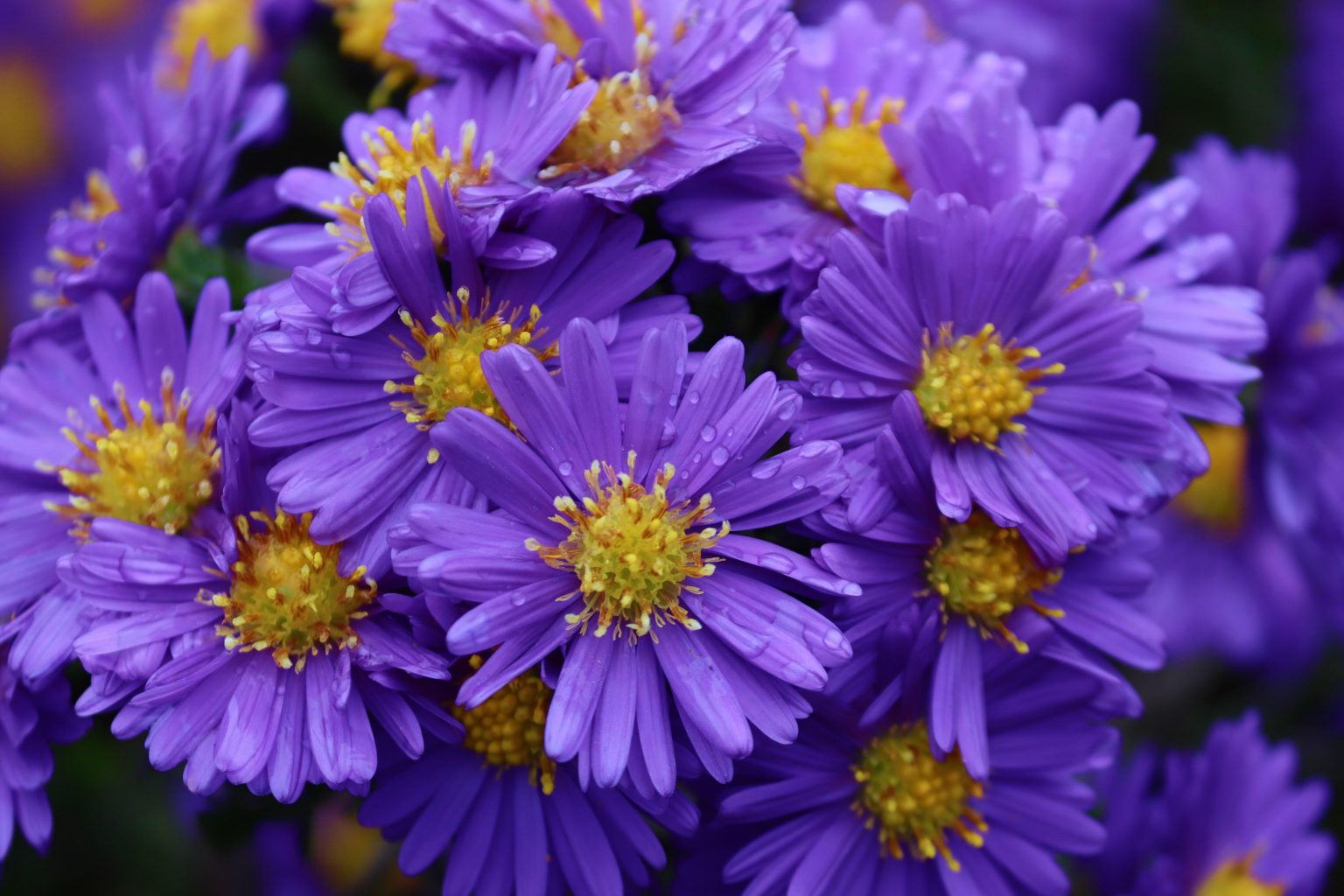
Dazzling and vibrant, aster flowers light up the autumn landscape in the Northern hemisphere. The month of September has adopted aster as its representative flower. Asters are alternatively known as Michaelmas daisies because they bloom around the same time as the autumn equinox, which is also the feast of St. Michael.
The name “aster” originates from the Greek world for “star”. The star shape can be seen as their vivid petals radiate from the central disc, very much like a celestial star. It is interesting that, as the Northern hemisphere enters the yin or dark half of the year, a blaze of beautiful star-shaped blossoms is on hand to usher it in.
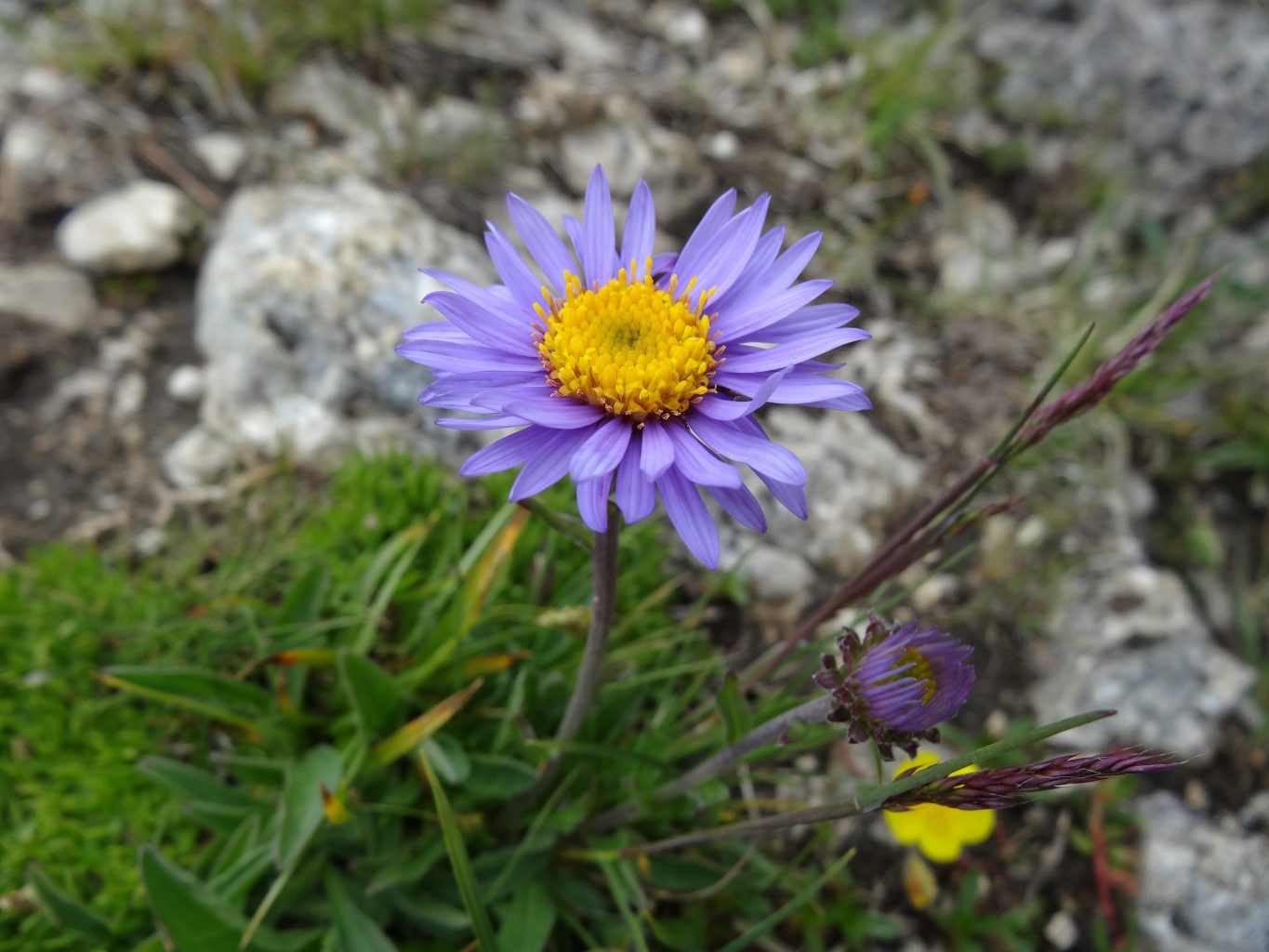
The origins of the genus Aster have been studied and reclassified over time. The estimates of species of asters worldwide range from 170-600, depending on the source. Most researchers seem to agree all asters originated in Eurasia, with the exception of one in North America, Aster Alpinus (see image above).
Aster species and varieties allow the plant’s height to range from 8 inches to 8 feet, so you may find an aster to fit your need. They make beautiful borders and are wonderful in rock or wildflower gardens. You can grow asters indoors if you use the correct potting soil mixed with peat and ensure they get a solid 6 hours minimum of direct sunlight each day – perhaps you have a sunny windowsill?
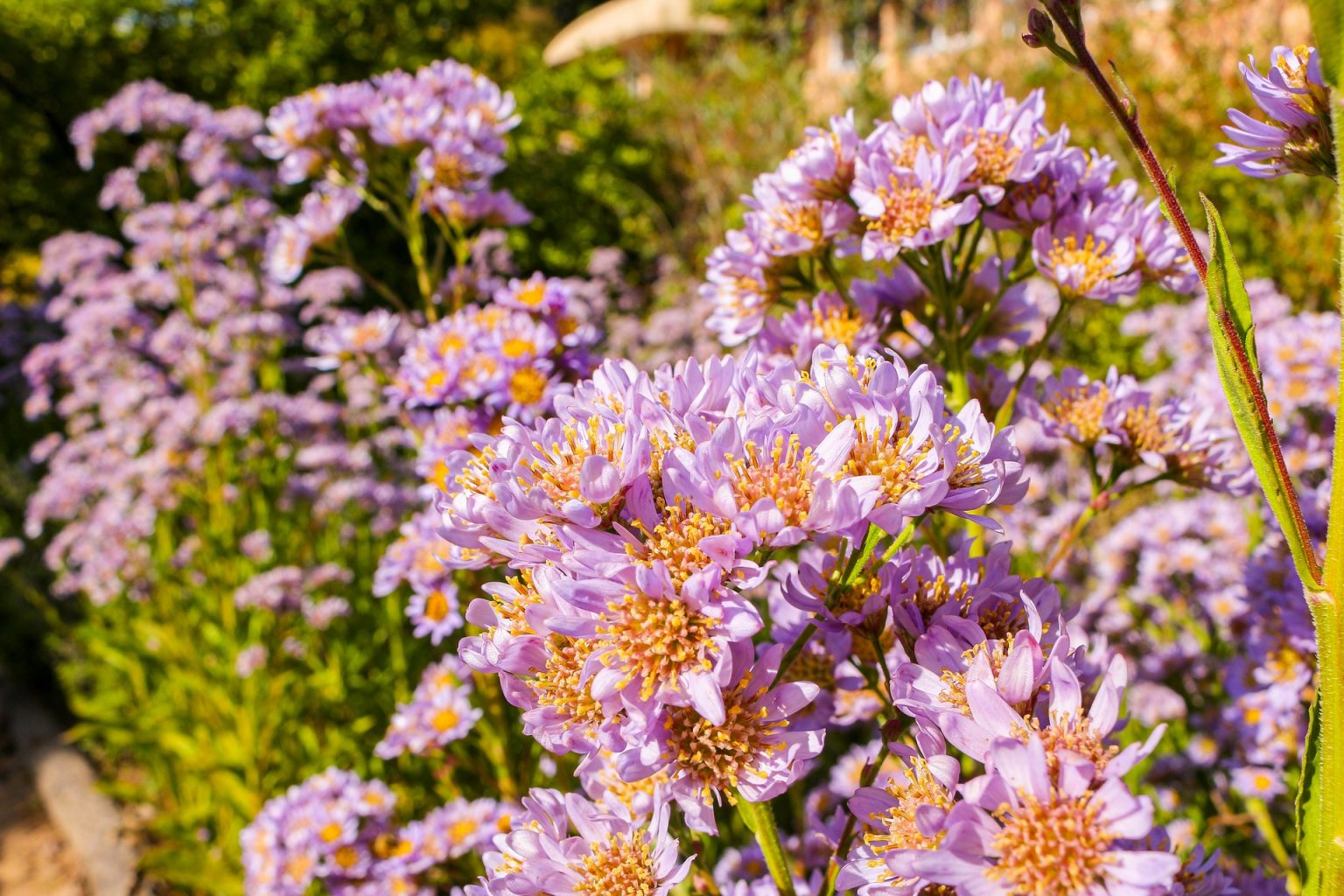
Native to Eastern Asia, Aster Tataricus (image above) is important in Traditional Chinese Medicine. The root, harvested in spring or fall for medicine, is braided and dried in the sun, then cut into thick slices. Some fry the root with honey before ingesting it.
Because it is warm in its nature, Tatarian Aster Root can assist those who have too much cold in their body due to excess Yin or not enough Yang. It is bitter and sweet, able to dry out excess dampness too. One of its greatest uses is in its ability to address imbalances of the lungs.
Certain varieties of asters are used in Asian cuisines with the leaves and young shoots added to stir fries, salads or soups. Some use the dried petals as a natural food coloring.

From Greek mythology we hear of the god, Jupiter, deciding to cause a flood on earth to end human war. The goddess Astraea became distraught at this news and begged to be turned into a star to avoid having to be a witness. After the waters from the flood had receded, Astraea wept for the loss of innocent lives. Her tears were said to have turned to stardust, falling to the Earth where they became the beautiful asters.
On a similar theme, there is a Cherokee legend which tells of two young girls who went looking for the herb woman, hiding themselves in the woods because they were frightened of the war going on between many tribes. When they found the herb woman, she agreed to help. She covered them with leaves and sprinkled them with herbs. The following morning found them each turned into a flowering plant. The one who had worn the blue dress now blossomed with the very first aster flower.
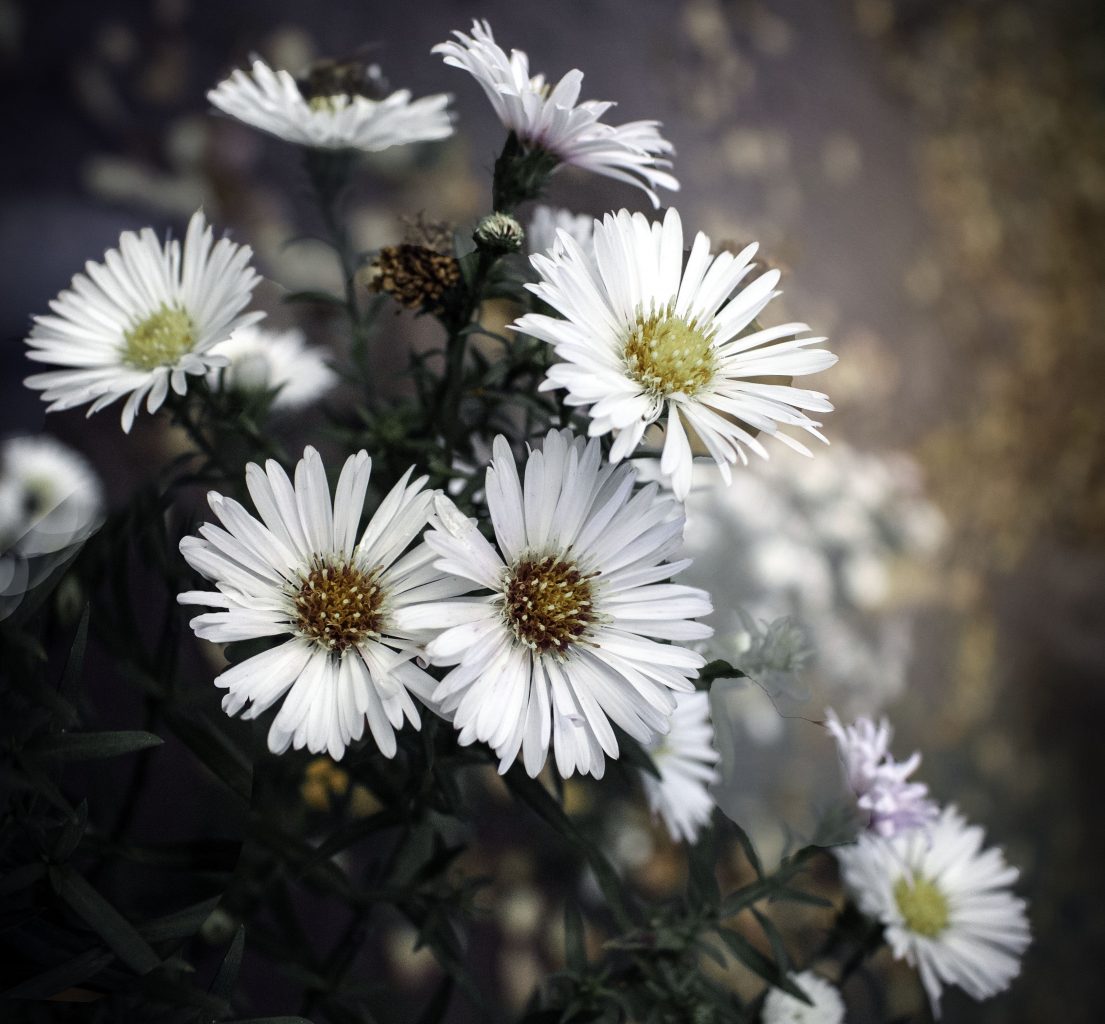
In the language of flowers, asters have been associated with many concepts across the years, depending on geography and culture.
In Victorian times floriography (cryptological communication using flowers as the coding language) was the fashion. Broadly, asters symbolized “love and daintiness” to the people of that time, as well as two qualities highly prized in those societies – “elegance and grace”.
In their more targeted communications, because of their wide range of vibrant colors, asters were a perfect communicative medium for a secret Victorian love code: red for potent romantic love, pink for a little less love intensity, white for virtue and yellow for friendship.
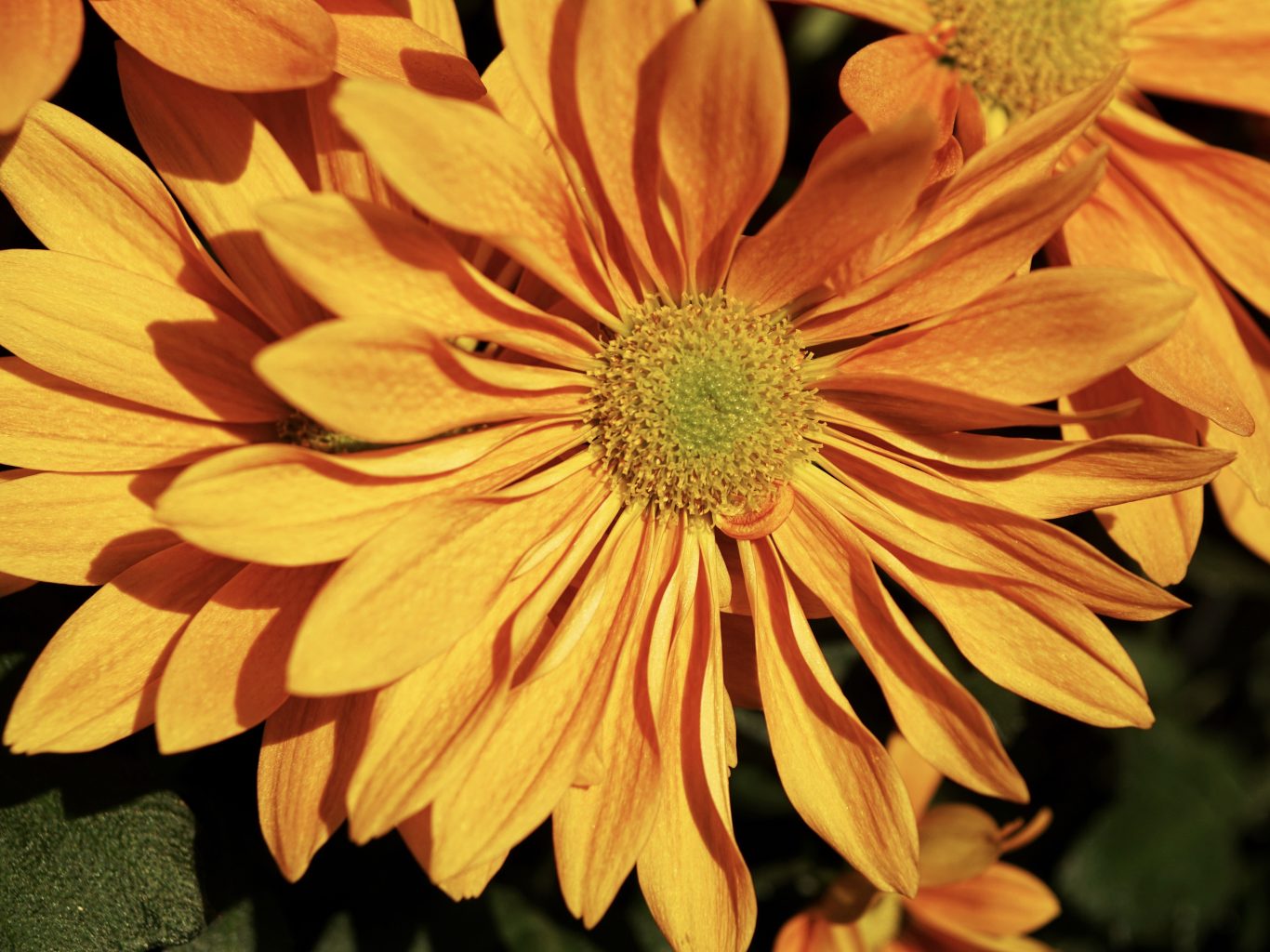
Asters are wonderful inclusions in bouquets and other floral arrangements. As mentioned, the Victorians took full advantage of them from about 1837 to 1901 when many secret messages were sent and received via coded flower arrangements. In addition, young women of high society wore or carried tiny floral arrangements to display their true feelings, which they could never speak out loud – affection, sorrow, desire – which they called “tussie-mussies” or “nosegays”.
Some have compared aspects of Victorian floriography to our present-day computer-generated “emojis” as a way of conveying unspoken messages or adding covert emotional context.
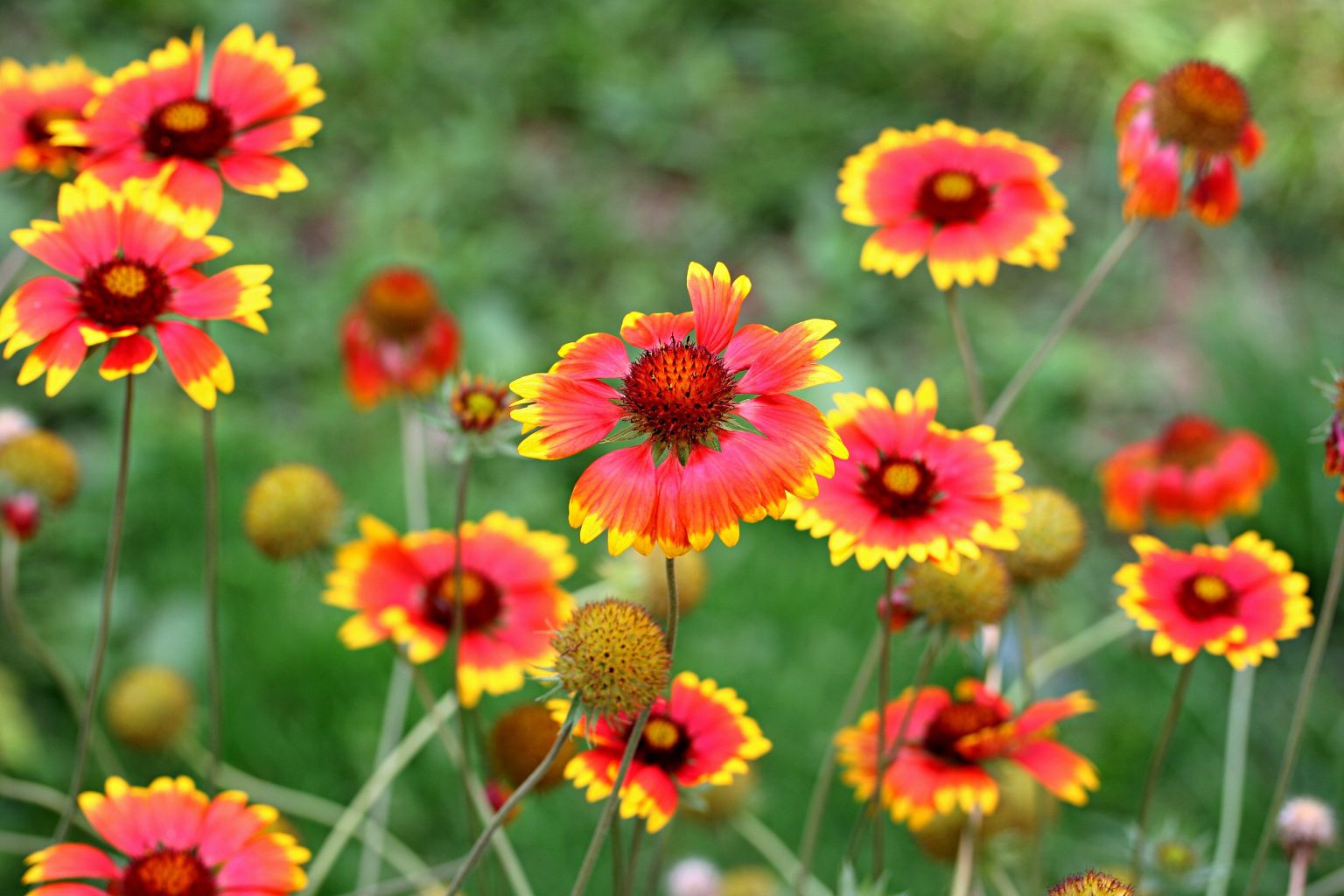
If we gather a few of the insights we’ve gleaned about aster from the previous paragraphs, a compelling image seems to emerge:
- The name aster is derived from the Greek word for star and they even resemble celestial stars. Their presence lights the time of the autumn equinox as we enter the dark or yin half of the year (bringing little sparks of light into a dark time just as the stars sparkle in the night sky)
- As a medicine in TCM (Traditional Chinese Medicine) aster root assists by increasing yang in those who are deficient or need to balance out too much yin. (bringing warmth to cold places)
- In the 2 legends of how asters came to be, we are shown how they were born as a result of mercy and compassion shown to those who suffered as a result of war. (bringing compassion into conflict)
- In Victorian times when emotional expression was often repressed, asters were among the flowers offering small pathways to relief. (bringing hidden emotions into the light)
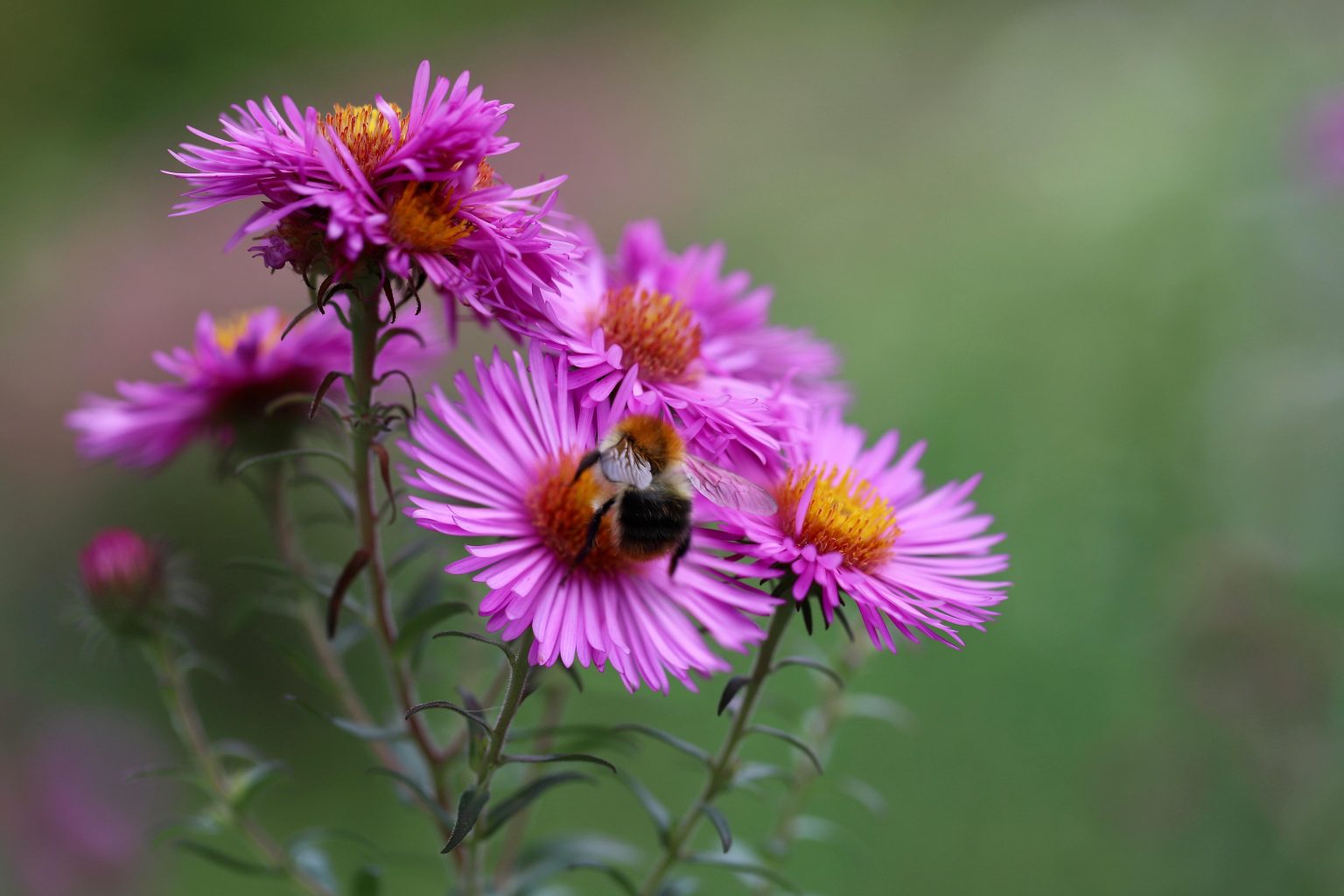
The insights on asters also bring to mind the yin yang symbol (Taijitu) balancing of opposites and, more specifically, their role as the bit of white in the black – which can be interpreted as yang in the yin, light in the dark or warmth within the cold.

Last, but definitely not least, these lovely star-shaped flowers ensure bees and other pollinators have a vital late-season supply of nectar. With so much to love about asters, there are many pathways to relationship with them.
